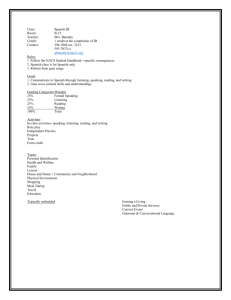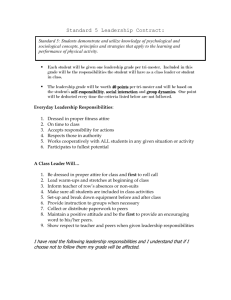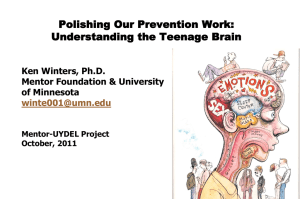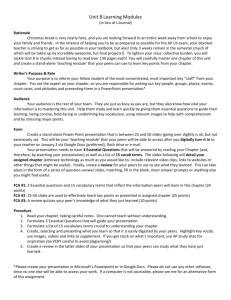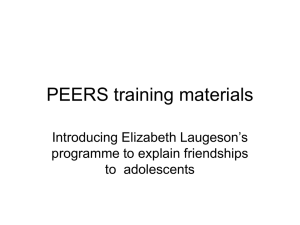IV Syllabus
advertisement
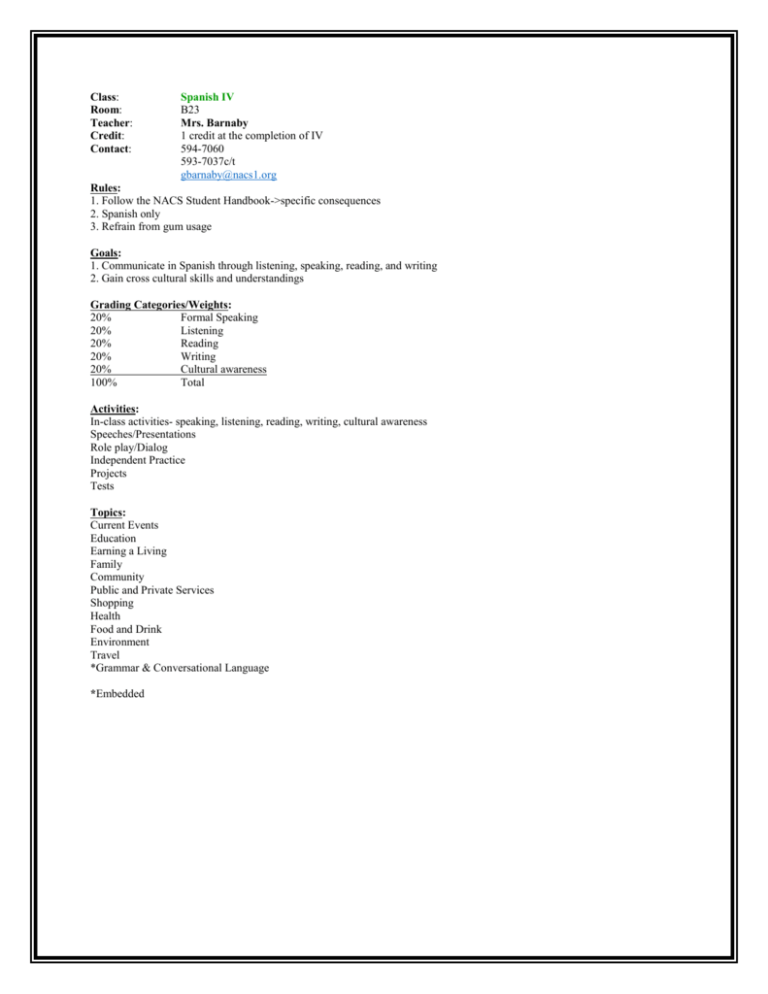
Class: Room: Teacher: Credit: Contact: Spanish IV B23 Mrs. Barnaby 1 credit at the completion of IV 594-7060 593-7037c/t gbarnaby@nacs1.org Rules: 1. Follow the NACS Student Handbook->specific consequences 2. Spanish only 3. Refrain from gum usage Goals: 1. Communicate in Spanish through listening, speaking, reading, and writing 2. Gain cross cultural skills and understandings Grading Categories/Weights: 20% Formal Speaking 20% Listening 20% Reading 20% Writing 20% Cultural awareness 100% Total Activities: In-class activities- speaking, listening, reading, writing, cultural awareness Speeches/Presentations Role play/Dialog Independent Practice Projects Tests Topics: Current Events Education Earning a Living Family Community Public and Private Services Shopping Health Food and Drink Environment Travel *Grammar & Conversational Language *Embedded What do I have to be able to do in Spanish IV, exactly?? Note: All students must be able to communicate in Spanish for the purpose of socializing, providing and obtaining information, expressing feelings, and getting others to adopt a course of action in eleven topic areas by listening, speaking, reading, and writing; and, demonstrate cross-cultural skills and understandings Listening: Comprehending auditory information with and without visual input and assessed with multiple choice questions Examples of listening activities: * comprehend messages and conversations when listening to peers, familiar adults, and providers of public services either face-to-face or on the telephone/loudspeaker. * understand the main idea and some information in television, radio, or live presentations * select vocabulary appropriate to a range of topics, employ simple and complex sentences in present, past, and future time frames, and express details and nuances by using appropriate modifiers Speaking: Initiating and sustaining a conversation for 6+ exchanges Examples of speaking activities: * Interaction with providers of common *public services in face-to-face communications * Informal everyday conversations with individual peers and adults * Informal conversations with peers and familiar adults * Interactions with providers of common public services by telephone * Group conversations among peers and familiar adults * Group discussions with peers * Informal presentations to groups of peers and familiar adults Reading: Comprehending reading material and assessed with multiple choice questions Examples of reading activities: *Information provided to the general public on forms, signs, billboards and posters, labels, programs, timetables, maps, plans, menus, etc. *Announcements, ads, and short reports of general interest in newspapers magazines, and other publications; short, informal notes *Simple business correspondence and pamphlets *Facts, opinions, feelings, and attitudes in correspondence from acquaintances and friends, peers, and adults * Letters to the editor and feature articles from general-interest public *Excerpts from poetry and prose for cultural appreciation Writing: Writing 125 word or more compositions in a variety of tenses and with a variety of vocabulary Examples of writing activities: * Forms to be filled out for the use of common public services *Informal notes for communications in everyday life situations *Brief reports describing simple situations and sequences of events *Personal letters to acquaintances and friends, peers, and adults *Formal letters to agencies, institutions, and businesses on topics of personal needs *Sales personnel, bank tellers, ticket agents, police, hotel personnel, etc.
